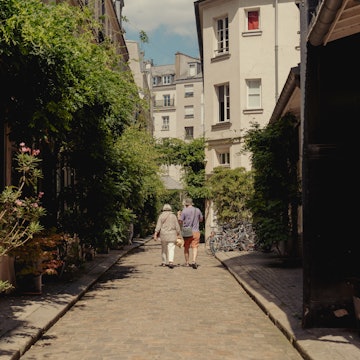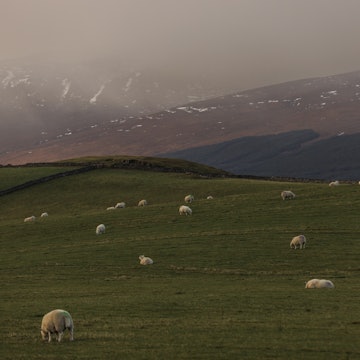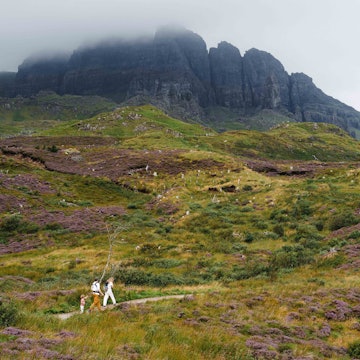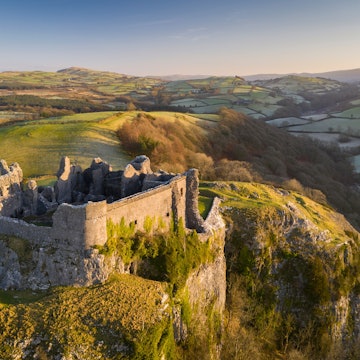
A 5-day Scotland itinerary from Edinburgh to Inverness

Jun 6, 2025 • 12 min read

This five-day itinerary will take you deep into Cairngorms National Park. Jaroslav Sekeres/Shutterstock
Almost every trip to Scotland involves a stop in Edinburgh, the nation’s history-soaked capital. But the dramatic Scottish scenery visible all around the city is just a warm-up act for the proper Highlands to the north. A five-day driving itinerary from Edinburgh to Inverness will lead you through some of the most soul-soaring landscapes in the country.
Starting in Edinburgh, you’ll cross the Firth of Forth and meander east to St Andrews, before cutting across to Dundee and Perth, then daisy-chaining between villages, whisky distilleries and mountain lookouts in the heart of Cairngorms National Park to reach Aviemore, closing out the trip at Loch Ness and Inverness.
If you’re ready for a Highlands adventure, get behind the wheel and try this five-day Scotland itinerary from Edinburgh to Inverness.
When to arrive
This itinerary will take you to some of the highest elevations in the country, so take advantage of the milder conditions from spring to fall. The best time to come is from May to September (though midges can be a hassle in some locations between June and August). Coming in May or September means cooler days and a higher chance of rain – but fewer bugs.
Crossing the higher ground in winter is a more serious undertaking. Roads through the Highlands can be blocked by snow from December to February and icy conditions mean you need to drive cautiously. Be prepared for emergencies, with food, water, blankets, and a mobile phone and charger.

How to get around
While buses and trains connect the larger stops on this itinerary, they won’t get you off the beaten track. Infrequent local buses connect spots around the fringes of Cairngorms National Park, but you’ll have much more freedom to explore with a car (easily rented on arrival in Edinburgh). Watch your speed – there are often sheep on the roads and speed cameras are commonplace.
What to pack
You’ll want warm layers at any time of year, plus a windproof and rainproof layers, the latter better than an umbrella in this windy part of the country. There’s a chance of rain year-round; summer temperatures peak at around 19°C (66°F) but cool down markedly in the evenings and overnight.
During the midge season, bring repellent and avoid exposing bare skin. You’ll need sturdy, waterproof footwear and spare dry socks for walking. Pack a power bank, charging cables and spare memory cards for your devices so you can record the stunning scenery.

Day 1: Go from Edinburgh to St Andrews
Go to St Andrews: Leaving Edinburgh, you’ll pick up the A90 to cross the Firth of Forth, and branch east along the A92 and A915, following the north shore of the Firth to St Andrews.
How to spend the day: Before you wave goodbye to Edinburgh, drive north to the seafront at Leith, so you can take a peek at the Royal Yacht Britannia – the former floating mobile home of the British royal family – and wander the prom, ideally with a punnet of chips from award-winning Pierinos, an Italian cafe has many say has the best fish-and-chips in Scotland.
Leave the Scottish capital behind as you cross the road bridge over the Firth of Forth – the deep inlet to the north of Edinburgh – enjoying epic views of the red span of the Forth Railway Bridge. Before you cross, drop into the cute Queensferry Museum to read up on local history, and detour west for a few miles to Hopetoun House, one of Scotland’s finest stately homes, an elegant charmer from the 1700s.
On the north side of the Firth, leave the traffic behind and follow the northern shore east towards Kirkcaldy, swinging in at Aberdour to admire shimmering Silver Sands beach and Aberdour Castle, with its picturesque 16th-century doocot (dovecote). If you’re a fan of enlightened economist Adam Smith, drop into the museum in Kirkcaldy, where he was born.
Leave the coast behind for the final drive to St Andrews, celebrated for its university (and museum), its pilgrim past, its legendary golf course – home to the sport’s governing body – and the sandy beach made famous by the movie Chariots of Fire.
Evening: On an evening out in St Andrews, track down quality Scottish cooking and local ingredients at Grange Inn or Forgan St Andrews.

Day 2. Explore Scottish history in Dundee and Perth
Go to Perth: It’s a short drive today – covering just 30 miles (48km) – so there’ll be time to dive into Dundee’s rich history of trade and design, and take in the royal Scottish sights of Perth before you hit the Highlands proper on day three.
How to spend the day: Head north from St Andrews and cross the Tay Road Bridge to Dundee, birthplace of the classic British Dandy and Beano comics, and a major hub for seafaring trade in past centuries.
Today, this historic port city is hailed for its cool art spaces and the creative redevelopment of its historic waterfront. Start exploring at the V&A Dundee, a stunning temple to Scottish design, set in a futuristic upended ziggurat designed by Japanese architect Kengo Kuma.
Contrast this modernist masterpiece with the centuries of history represented by the RSS Discovery, the steam-powered expedition vessel of Antarctic explorer Robert Scott; and the revamped Verdant Works, home to a museum exploring the history of Dundee’s jute industry, which created the covers for the wagons that settled the American West.
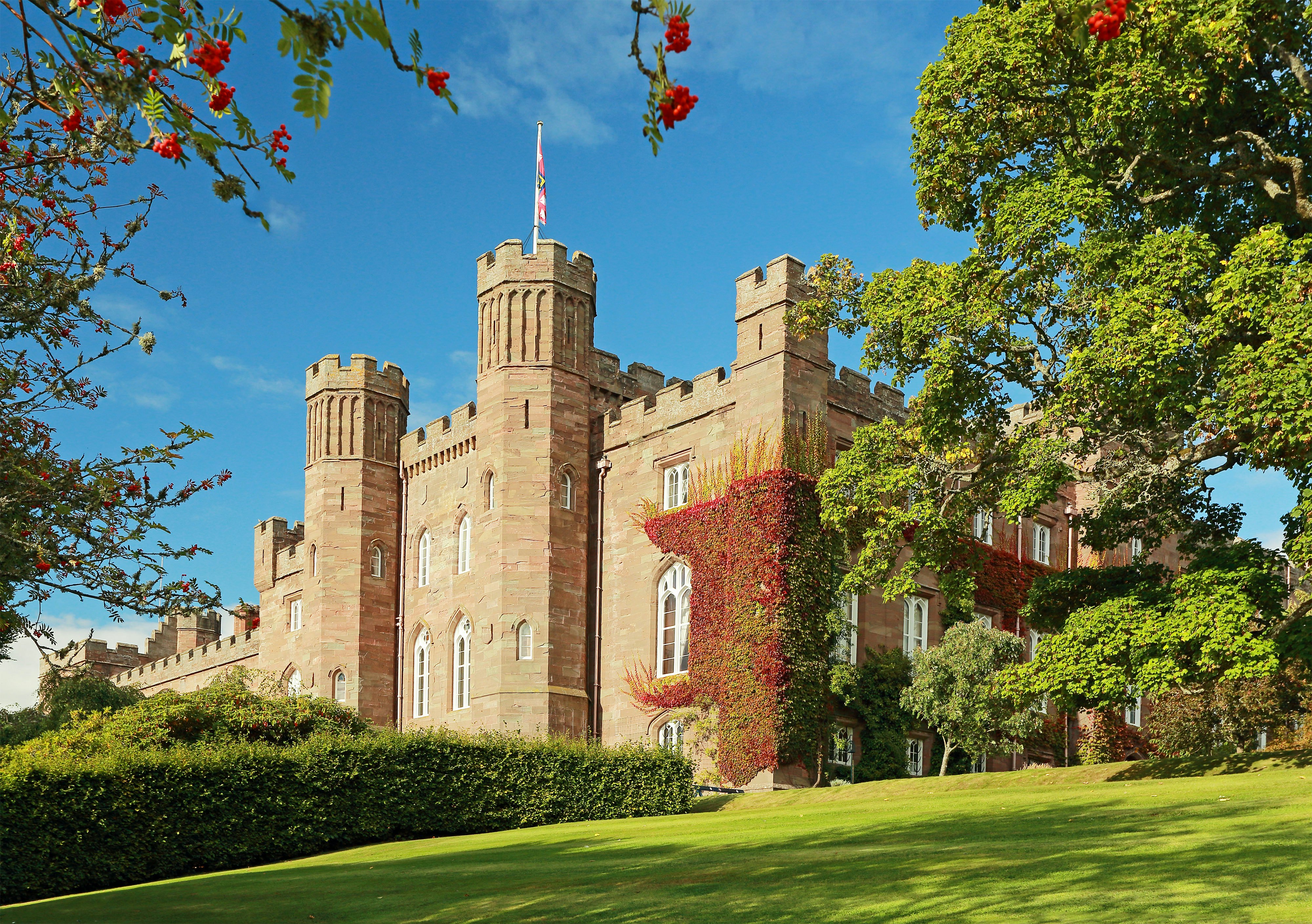
After lunch, move on to Perth, the first seat of the Scottish parliament. This appealing city could have been Scotland’s capital – but for the murder of the unpopular James I at Blackfriars monastery in 1437. Instead, Perth built its fortune on weaving, dyeing, fishing, brewing and whisky (thanks to local brands Dewars and Bells).
On the outskirts lies Scone Palace, a country house of staggering luxury built beside the ancient crowning place of Scotland's monarchs. Considerably upgraded from its original 16th-century footprint, this grand royal residence is well worth visiting for its magnificent, peacock-stalked grounds and lavishly furnished chambers.
The kings of ancient Scotland were crowned on Moot Hill, today topped by a chapel next to the palace. It was here in 838 CE that Kenneth MacAlpin became the first king of a united Scotland and installed the Stone of Destiny, on which Scottish kings were ceremonially invested.
This esteemed block of sandstone was stolen away to London’s Westminster Abbey in 1296, but returned to Edinburgh Castle 700 years later, in 1996. It finally took pride of place in the Perth Museum – a striking neoclassical building styled after Rome’s Pantheon.
Evening: There’s good eating in Perth; try 63 Tay Street for award-winning fine dining, or North Port for seasonal Scottish flavors served in a stone-walled, timber-lined townhouse. Follow up with a pint at the King James pub, on the exact spot where James I was murdered.
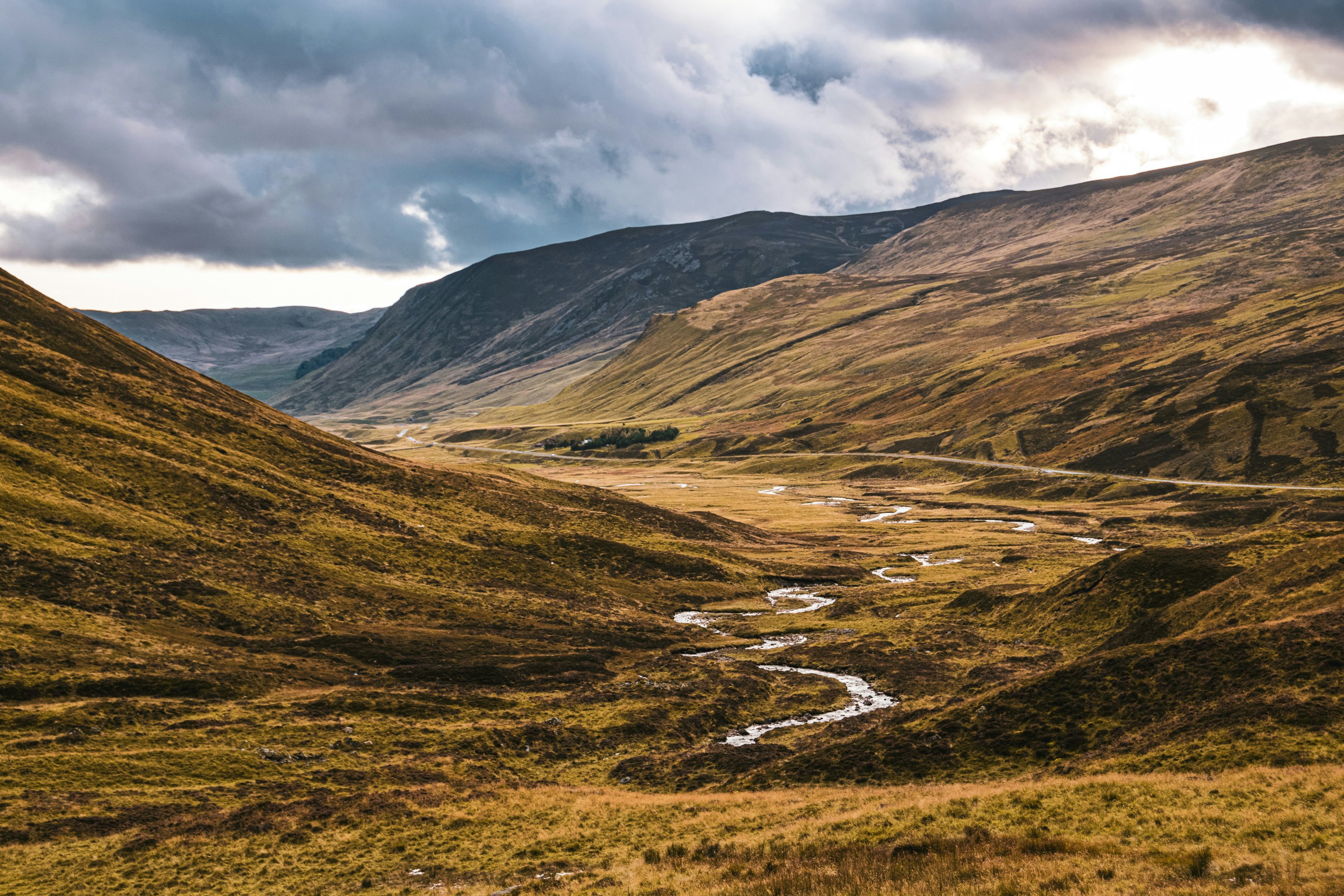
Day 3. Cross the Cairngorms to Aviemore
Go to Aviemore: Today, you’ll leave the Scottish lowlands and head up into the exposed glens of the Cairngorms – home to Scotland’s second highest peak, 4295ft (1309m) Ben Macdui. The most popular route to Aviemore follows the A9 along the River Tay, but you’ll see more of the Highlands if you follow the A93, which climbs into the high country en route to Braemar.
Beyond Braemar, you’ll leave the A93 and circle around to the north of Cairngorms National Park on the A939, looping southward to Aviemore, past a string of famous-name whisky distilleries. This route is celebrated as the SnowRoads – a nod to the difficulties of following this route in winter.
How to spend the day: A lot of the morning will be spent just admiring the increasingly eye-catching scenery as you drive towards Braemar, ducking in and out of glens and gorges. The landscape is lovely – and wild and lonely in places – passing through rising hills painted with a camouflage pattern of brown heather, green conifers and bright sheep meadows.
Before reaching Braemar, you’ll pass through the Glenshee ski area – a busy ski hub in winter and popular base for walks in summer. Consider breaking the trip for a hike into the hills; the Glenshee chairlift operates from June to September for walkers and mountain bikers, whisking you up above the landscape almost to the summit of The Cairnwell (3061ft/933m).

Braemar is worth a stop for its cultural connections. On the first Saturday in September, the village hosts the Braemar Gathering, the most famous of Scotland’s many Highland Games, complete with traditional dancing and pipers, a tug-of-war, caber toss, stone-throwing and other quintessentially Scottish activities.
History fans should make a stop at Braemar Castle, a 17th-century turreted fortress that served as a government garrison after the Jacobite rebellion. The other big castle around Braemar is Balmoral, built in 1855 as a private residence for Queen Victoria. To see the lavish living spaces behind the Scottish baronial facade, you’ll need to join a tour.
At Bridge of Gairn, branch north onto the A939 – aka the Old Military Road – cutting through the heart of the Speyside whisky area. At Tomintoul, pause to sample the award-winning 16-year-old “gentle dram” on a tour of the Tomintoul Distillery, then detour off the A939 to reach the prestigious Glenlivet Distillery – a Speyside celebrity near Ballindalloch.
Depending on how seriously you take your whisky, you could detour a few miles northeast to sample the house whiskies at the Macallan Distillery (tasting experiences run Thursday to Sunday) at Craigellachie, and the atmospheric Glenfiddich Distillery near Dufftown. As the sky darkens, turn south on the A9 to reach Aviemore in time for supper.
Evening: You’ll be in the company of walkers and climbers in Aviemore, the self-styled adventure capital of the Cairngorms. Sup on Scottish classics at the Cairngorm Hotel or the cozy Old Bridge Inn (where there may be live music to follow), then grab a bedtime drink at the Winking Owl, a much-loved hangout for outdoorsy types.

Day 4: See more of the Cairngorms from Aviemore
Go from Aviemore to Inverness: You’ll spend the day exploring the Highlands around Aviemore, before rolling into Inverness on the A9 by nightfall.
How to spend the day: With a day in the heart of Cairngorms National Park, set off on foot to explore. Starting from Aviemore Youth Hostel, a trail leads west into Craigellachie Nature Reserve, crossing steep hillsides covered in natural birch forest. Look out for wildlife, including rare capercaillie and peregrine falcons from April to July.
The high point of the Highland terrain above Aviemore, Cairn Gorm (4085ft/1245m) is the sixth-highest summit in the UK, and a popular destination for day hikes and longer Highlands rambles. Experienced hill walkers can climb from the Coire Cas car park (about 10 miles/16km southeast of Aviemore) to the summit of Cairn Gorm in about two hours each way.
Alternatively, you can take the easy route on the Cairngorm Mountain Railway, a toy-like funicular that trundles up to the edge of the Cairngorms plateau in just eight minutes. Another leisurely way to take in the scenery is on the Strathspey Steam Railway from Aviemore railway station to Broomhill, via Boat of Garten.

Looking for something more unusual? Cairngorms National Park is home to Britain’s only free-ranging herd of reindeer – a species hunted to extinction in Scotland around 800 years ago but reintroduced in 1952. You can join a two-hour guided walk to meet these disarmingly tame deer with Cairngorm Reindeer Herd, based at Glenmore, six miles (10km) east of Aviemore.
Other rewarding ways to spend a day around Aviemore include wandering around Loch an Eilein, with its ruined castle and peaceful pine woods – part of the managed Rothiemurchus Estate forest – and osprey-watching at Boat of Garten, where nesting pairs can reliably be spotted near the Loch Garten Nature Centre.
Evening: You’ll end the day with a short drive north to Inverness, where you can sample creative Scottish cooking at Rocpool or enjoy a Mediterranean-inspired menu backed up by single malts at Mustard Seed by the River Ness.

Day 5: Take a turn around Loch Ness
Go to Loch Ness: The A82 runs southeast from Inverness along the north shore of Loch Ness, while the less trafficked B862 and B852 track the south shore.
How to spend the day: Start off by taking in some of the sights in Inverness, beginning at Inverness Castle, a picturesque pink-sandstone Scottish baronial confection dating from the 1840s, built on the site of a medieval castle destroyed by Jacobites in 1746. Explore the gorgeous gardens and terraces for sweeping views south towards the Great Glen and Ben Wyvis.
Alternatively, head east to the Culloden battlefield – where the last pitched battle on British soil took place in 1746. The Jacobite defeat at Culloden was a fatal blow for the traditional Highland way of life, ushering in an era of suppression of Highland identity by the ruling British crown and the notorious Highland Clearances.
After lunch, it’s off to Loch Ness – almost unfathomably deep at 755ft (230m) and the largest lake by volume in the British Isles. Stretching for 22 miles (35km), Loch Ness dominates life south of Inverness; its banks are a jumping-off point for soul-soaring road and boat trips, as well as hiking and biking adventures into twisting glens and heather-clad ridges.
This is also the home of Scotland’s most famous long-necked cryptid, Nessie. Whether you believe in the existence of this multi-humped monster or not, the legend adds atmosphere to any trip to this slender and mysterious loch.

Urquhart Castle is a popular Nessie-watching hotspot, commanding a brilliant location just east of Drumnadrochit. The views are outstanding on clear days, particularly from the five-story tower house at the northern end of the crumbling ruins.
Head on to Drumnadrochit – a village seized by monster madness, with Nessie cuddly toys bursting from its gift shops. Drop by the Loch Ness Centre to explore the monster myth and take a one-hour cruise with Deepscan Cruise, keeping a close eye on the boat’s echo sounder in case Nessie puts in an appearance.
Feeling energetic? Follow a section of the 80-mile (129km) Loch Ness 360° Trail, linking the Great Glen Way and South Loch Ness Trail. You can begin and end in Inverness, or join the trail at any point; the scenic (and topographical) high point is Suidhe Chumein at 1444ft (440m), a viewpoint reached after a long climb from Fort Augustus.
For a bonus dose of the supernatural, visit Boleskine House on the southern shore of Loch Ness. From 1899 to 1913, this 18th-century hunting lodge was home to Aleister Crowley, a notorious figure obsessed with black magic. The self-styled occultist was the inspiration for Ozzy Osborne’s Mr Crowley; Led Zeppelin guitarist Jimmy Page owned the manor in the 1970s.
Evening: You can either close out the tour in Inverness, or stop for dinner with a Loch Ness view at the Boathouse Inn in Fort Augustus. Check out the latest news on the Dores Inn by Dores Beach – the pub was recently taken over by Scotland’s richest man, the Danish immigrant Anders Holch Polvsen, with plans to reopen in 2026.
This article was adapted from Lonely Planet’s Scottish Highlands & Islands guidebook, published in June 2025.








